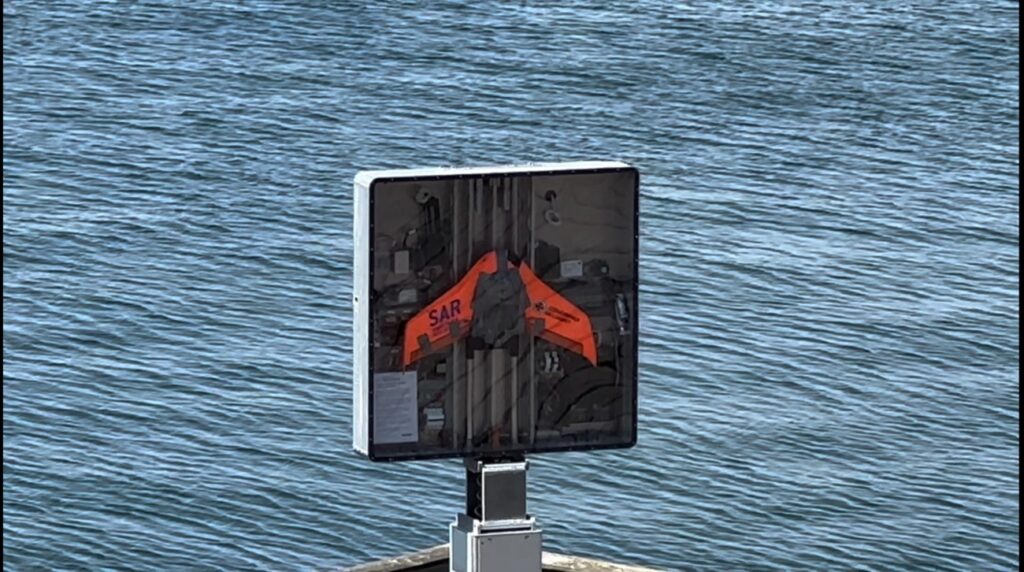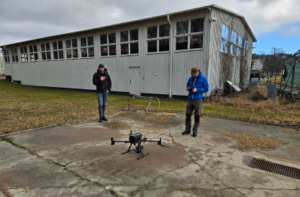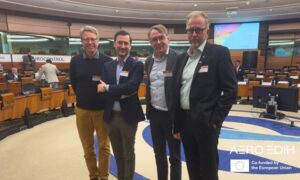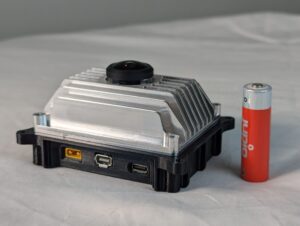Drones for Sea Rescue – Digitalisation for Increased Human Safety and Lower Carbon Emissions
This success story highlights how Remote Aero in collaboration with the Swedish Sea Rescue Society and Aero EDIH successfully leveraged digitalization and drone technology to transform sea rescue operations. By addressing challenges related to response times and high carbon emissions, the project achieved significant improvements in both operational efficiency and environmental impact, while enhancing the safety of rescue missions.
“It feels inspiring and meaningful to be part of Aero EDIH and contribute to innovative solutions that not only support individual companies but also have a positive impact on society as a whole,” says Tomas Westlund, Head of Testing Before Investing at Aero EDIH.

The Challenge
Modern Sea Rescue Operations requires a rapid responses to save lives, but are resource-intensive, leading to significant carbon emissions from rescue vehicles. The need for digitalisation and more fuel-efficient methods is increasing and drone technology offers an innovative solution. Drones can drastically reduce response times, cut fuel consumption and optimise rescue missions through real-time information and optimised flight paths.
To address these challenges two innovative solutions were developed through collaboration between Remote Aero, the Swedish Sea Rescue Society and Aero EDIH. The first solution involved developing and testing smart landing software that enables fixed wing drones to safely land into the wind, reducing ground speed and minimising risks related to landing for both personnel and rescue vehicles. The second solution involved a wide-field electro-optical system that delivers real-time imagery to the operator without adding extra weight or complexity to the drone, improving both efficiency and safety.
Testing Before Investing
To meet these challenges Remote Aero utilised Aero EDIH’s Testing Before Investing service package. This package is designed to help companies test digital solutions before committing to large-scale investments. By leveraging this package Remote Aero gained access to advanced technical expertise and testing facilities. They were able to test their drone-based sea rescue solutions including the smart landing software and the real-time imaging systems during a three-day demonstration at the Swedish Sea Rescue Society’s facilities in the Gothenburg archipelago. This testing phase allowed Remote Aero to refine their technology and ensure that it meets operational requirements. Utilising Aero EDIH’s as an enabler for this testing allowed the company to also mitigate financial risks associated with technology development.
The Solution
Aero EDIH helped Remote Aero connect with a solution providers who tailored digital solutions to meet their needs. The landing system, which use real-time wind speed calculations, was integrated into the drone’s control system. The solution was also released as open-source software in the Ardupilot repo enabling millions of users to improve the safety of fixed-wing drone landings in the future.
The electro-optical system, based on a fixed wide-field camera, were vibrations and the field of view distortion was handled in a software solution instead of utilizing mechanical stabilization, made the technology lighter and thus more range efficient.
Sea rescue in Sweden today is primarily conducted by the Swedish Sea Rescue Society, an NGO that operates 230 rescue vehicles at 74 stations across the country. The organisation is highly innovative and works closely together with partners to improve its operations. Remote Aero has been a key partner in their effort to digitalize and improve Sea Rescue through green technology.
A particularly noteworthy aspect of the project is that the landing software was made open source, allowing millions of drone users worldwide to benefit from this technology and make drone flights safer.

Results and Benefits
With Aero EDIH’s support Remote Aero was able to deliver an improved solution for sea rescue using their drone technology. The solution have resulted in both quantitative and qualitative benefits:
- Increased safety and efficiency: The smart landing software reduced ground speed by 10–80%, directly minimising risks to personnel and reducing the likelihood of damage to rescue vehicles during the landing phase.
- Improved precision: The safety and accuracy of landings have increased allowing rescue teams to operate in more challenging weather conditions without added risk. This has led to greater operational reliability.
Remote Aero now has enhanced capabilities to operate drones autonomously reducing the need for human intervention in risky situations, which paves way for a more streamlined and safer rescue process.
Open-Source Collaboration and Knowledge Sharing
By releasing the landing software as open-source Aero EDIH has contributed to the broader drone community and fosters innovation and collaboration. This allows other companies and organisations to further develop and benefit from the solution created during this project.
Lessons Learned
Using the innovation dialogue to collaboratively evaluate problems and potential solutions has proven to be a highly valuable way to identify digitalization efforts that can improve products and processes. It has also proved important to involve technical experts alongside innovation specialists and individuals with diverse backgrounds to assess ideas from multiple perspectives.
Social and Economic Impact
The implementation of Remote Aero’s drone technology for the Swedish Sea Rescue Society is expected to yield both social and economic benefits.
- Social impact: Drones equipped with smart landing software and wide-field electro-optical technology will enhance the safety of both rescue personnel and people in distress. By reducing risks to ground teams and increasing the drones’ ability to handle difficult weather conditions lives can be saved in areas where human rescue teams would struggle to act quickly.
- Economic impact: The reduced need for manual intervention and improved drone control will lower the costs of sea rescue operations. The improved awareness and precision in rescue missions will optimize the use of resources and rescue vehicles, thus reducing fuel consumption and cost.
Measurable Data
The smart landing software has resulted in a reduction of ground speed by 10–80%, depending on wind speed, which has a direct impact on safety.
DMA Score and Results
In the first DMA (Digital Maturity Assessment) evaluation, Remote Aero received a score of 54, with strengths in digital business strategy (70%) and weaknesses in green digitalisation (40%). The second DMA evaluation is pending, but is expected to show measurable results in fossil fuel reduction based on data points gathered using the company’s digital products at the end-user side.
















